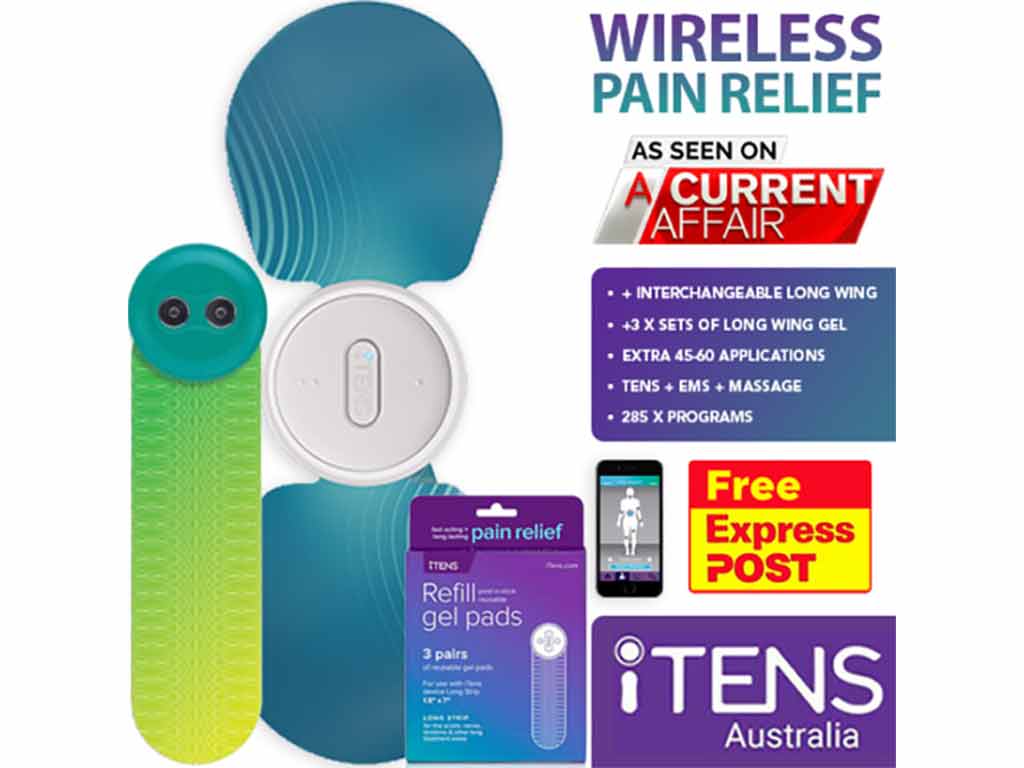
Factors like diabetes or injury can cause nerve pain in the legs. Moreover, it can be a chronic and persistent condition that is often difficult to treat. As a result, individuals suffering from this type of pain are constantly seeking effective methods to alleviate their discomfort. One such option is a Transcutaneous Electrical Nerve Stimulation or TENS machine for nerve pain in legs. It utilises mild electrical currents to stimulate sensory nerves. Consequently, it effectively lessens pain perceptions.
Typically, people go to pain clinics, see a physical therapist, or have a health professional prescribe them drugs. However, these treatments may not always work and can deplete their resources. Fortunately, alternative pain management methods are available and more accessible nowadays. Individuals can acquire medical devices such as TENS from online or physical stores. The following sections will present the condition, how TENS works to relieve its pain, and the proper electrode placement.
Understanding the Condition Before Using a TENS Machine for Nerve Pain in Legs
Before using a TENS machine for nerve pain in legs, it is vital to understand the condition causing the pain. This helps determine the best course of treatment and whether using a TENS is appropriate. Consulting with a medical professional is necessary to properly diagnose the condition. Typically, diabetes, injury, or nerve compression can cause neuropathic pain.
Diabetes damages the nerves in the legs. Then, diabetic neuropathies can bring sharp, burning, or shooting pain. Meanwhile, injury to the leg can also cause nerve damage and lead to a type of neuropathic pain. Lastly, nerve compression in the legs may occur from sitting for long periods or having poor posture. This compresses nerves and causes painful sensations.
While medicines can help, it is also beneficial to use a TENS device. This method of pain relief can target specific areas in the legs and may provide a better result than drugs alone. It is a generally safe treatment not just for nerve pain but also for different types of pain in adults. However, people should use the machine as directed to avoid any potential complications or exacerbation of the pain.
Types of Leg Pain
- Muscle cramps – Sudden, intense, and temporary pain that muscle overuse, dehydration, or mineral imbalance causes.
- Shin splints – Pain along the shin bone due to repetitive running or jumping. It is often a result of improper footwear or overtraining.
- Restless leg syndrome – Uncontrollable urge to move the legs. This often worsens at night and can disrupt sleep.
- Sciatica – Shooting pain that radiates along the sciatic nerve from the lower back down the back of one leg, which nerve irritation causes.
- Peripheral Artery Disease (PAD) – Cramping or leg pains during physical activity due to narrowed arteries and decreased blood flow.

How a TENS Machine for Nerve Pain in Legs Works for Effective Relief
A TENS machine for nerve pain in legs delivers low-voltage electric currents to the body. It stimulates the nerves in the affected area through electrode pads. These electrical pulses help to block the pain signals from getting to the brain. Subsequently, it reduces the discomfort from the condition and allows the individual to move and function more comfortably.
TENS devices also work by triggering the production of endorphins, which are the natural painkillers of the body. This method of pain relief is non-invasive. Moreover, individuals can easily adjust it to control the intensity and frequency of the electrical pulses. Furthermore, they can modify the duration of the treatment session. This provides a personalised and effective relief for neuropathic pain in the legs.
In addition, a TENS unit improves blood circulation and reduces muscle tension. By using the device regularly, people can experience long-lasting pain relief and better mobility in their legs. It is advisable to speak with a healthcare professional before using TENS. Doctors can guide on the correct placements of the sets of electrodes and ensure proper overall usage.
Benefits of Electrotherapy
Electrotherapy offers a wide range of therapeutic benefits. It can help to reduce various types of pain naturally. This includes musculoskeletal pain, knee joint pain, and post-operative pain. People with other chronic pain conditions, such as arthritis and fibromyalgia, can utilise electrotherapy to improve their quality of life.
Also, it stimulates the muscles and nerves to aid in the rehabilitation process for individuals recovering from injuries or surgeries. Similarly, it strengthens the muscles to support the musculoskeletal system. Furthermore, electrotherapy is 100% drug-free. Thus, it is a safe and accessible option for individuals who may not be suitable candidates for other forms of treatment.

Pad Placement When Using a TENS Machine for Nerve Pain in Legs
When using a TENS machine for nerve pain in legs, proper electrode placement is essential. People should position the pads directly to or around the area of pain. Make sure to attach them securely to target the affected nerves. Experiment with different patterns by moving the electrode pads in different directions. Correct placement can make a significant difference in the effectiveness of TENS therapy.
Avoid placing the electrodes over broken skin because this can cause further skin irritation. Additionally, do not apply the pads too close together. Otherwise, it can result in ineffective pain relief. Using an electrical nerve stimulation machine properly is vital to achieving the best results. Therefore, take the time to carefully position the electrode pads in the appropriate areas for optimal relief.
Consulting with a healthcare professional can provide valuable guidance on the best placement for TENS pads. Also, thoroughly read the instruction manual that comes with the device. It can guide where to apply the electrodes for pain control in the legs. Following these guidelines and being mindful can maximise the benefits of TENS therapy.
Precautions
There are precautions to keep in mind when using a TENS device for safety. One of these is not using the machine near water to avoid sudden electrical shocks. Moreover, avoid overusing the electrical device because it can cause uncomfortable sensations like burning or itching.
Moreover, some individuals may have sensitive skin and have allergic reactions to adhesives. Hence, pay attention to any signs of discomfort. Also, they may opt for hypoallergenic electrodes for preventive purposes. It is essential to follow all safety measures and shut off the machine immediately if there are experiences of any adverse effects.
Conclusion
Neuropathic pain can have multiple causes. Thus, people should consult a doctor before undergoing any treatment. One option is TENS, which produces electrical impulses to stimulate different pain areas. It blocks the transmission of pain signals to the brain and increases the production of endorphins. Subsequently, it manages various conditions, like knee pain and labour pain. Once the doctor approves a TENS machine for nerve pain in legs, people should follow the guidelines for optimal relief.
Individuals must attach the electrode pads to the pain site for targeted relief. However, they can also place the pads near the area of discomfort. They can test different patterns to see which works best in alleviating the pain. When applying the electrodes, they must avoid broken skin because it can only aggravate the state further. People can incorporate TENS into their daily routines, but they need to remember the precautions to avoid experiencing unpleasant sensations from TENS.




















